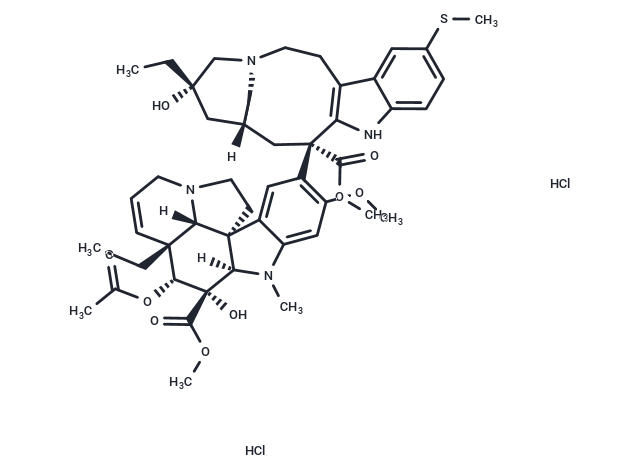Shopping Cart
- Remove All
 Your shopping cart is currently empty
Your shopping cart is currently empty

ALB-109564 dihydrochloride is a semi-synthetic derivative of the vinka alkaloid vinblastine with potential antineoplastic activity, a microtubule protein inhibitor and antineoplastic compound. It binds to tubulin monomers and inhibits microtubule formation, resulting in disruption of mitotic spindle assembly and arrest of tumor cells in the G2/M phase of the cell cycle.

| Pack Size | Price | Availability | Quantity |
|---|---|---|---|
| 25 mg | $1,520 | Backorder |
| Description | ALB-109564 dihydrochloride is a semi-synthetic derivative of the vinka alkaloid vinblastine with potential antineoplastic activity, a microtubule protein inhibitor and antineoplastic compound. It binds to tubulin monomers and inhibits microtubule formation, resulting in disruption of mitotic spindle assembly and arrest of tumor cells in the G2/M phase of the cell cycle. |
| Molecular Weight | 929.99 |
| Formula | C47H62Cl2N4O9S |
| Cas No. | 1300114-12-8 |
| Relative Density. | no data available |
| Storage | Powder: -20°C for 3 years | In solvent: -80°C for 1 year | Shipping with blue ice. |

Copyright © 2015-2025 TargetMol Chemicals Inc. All Rights Reserved.